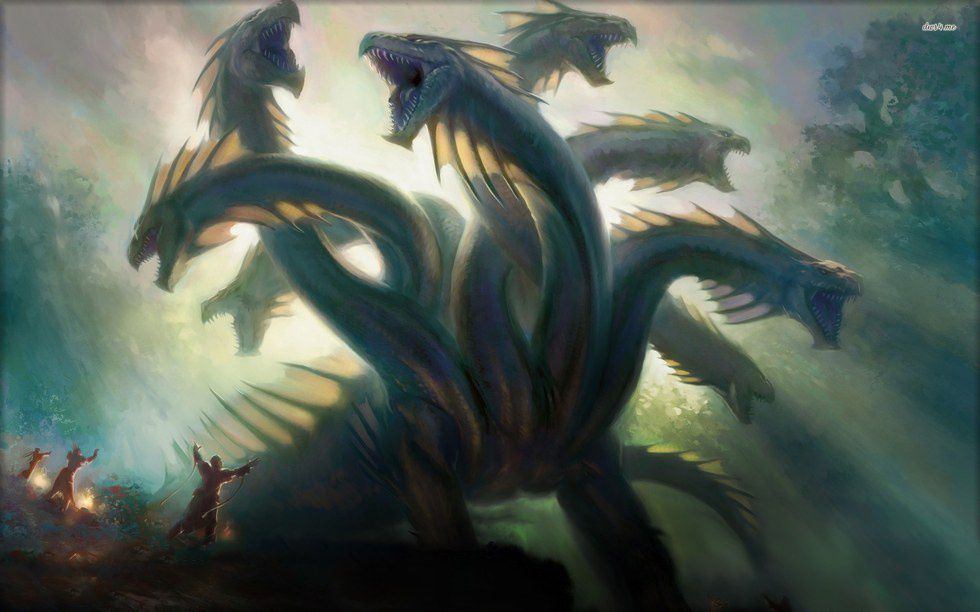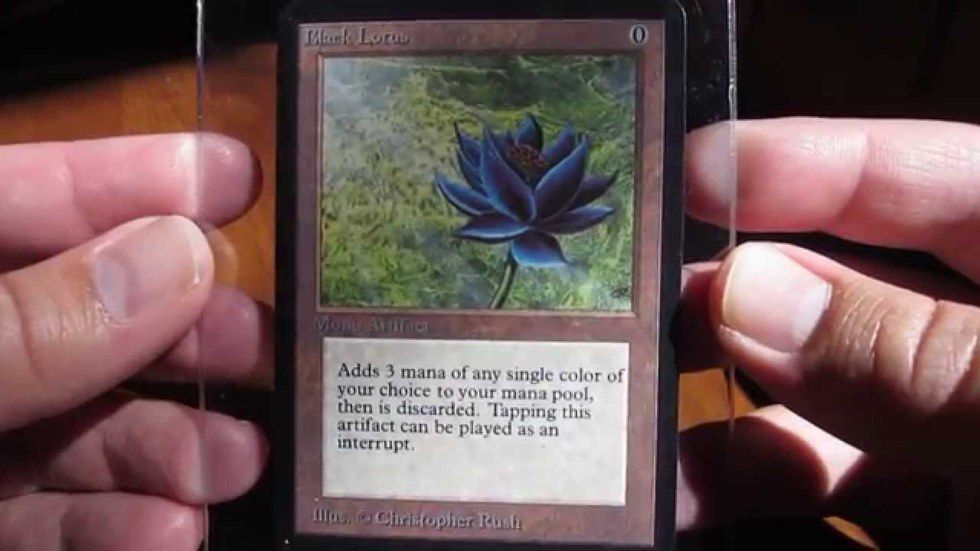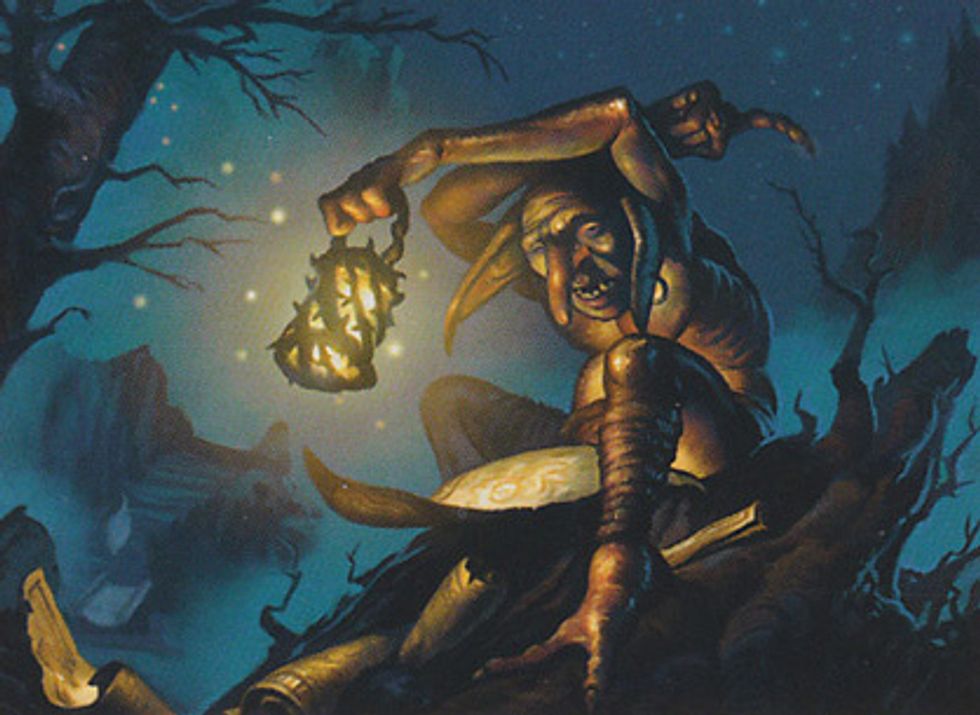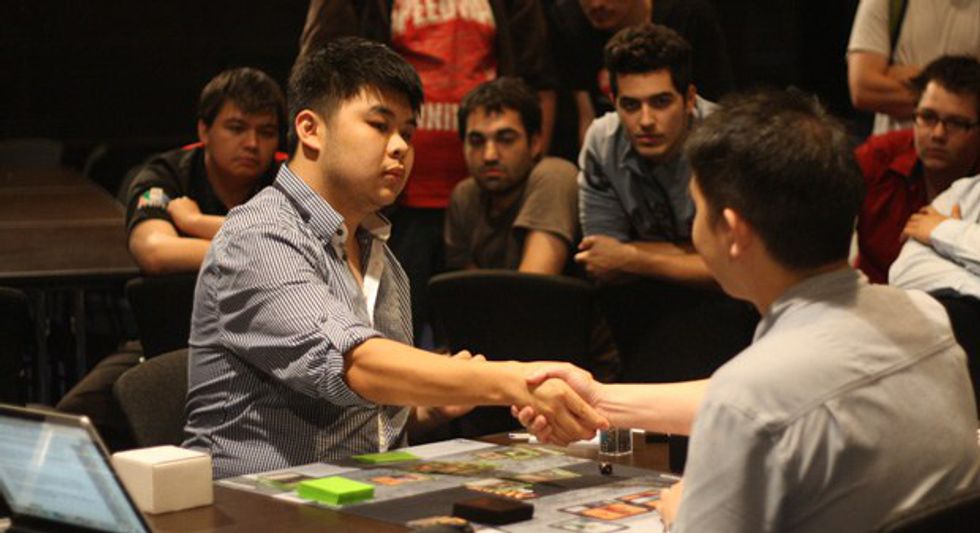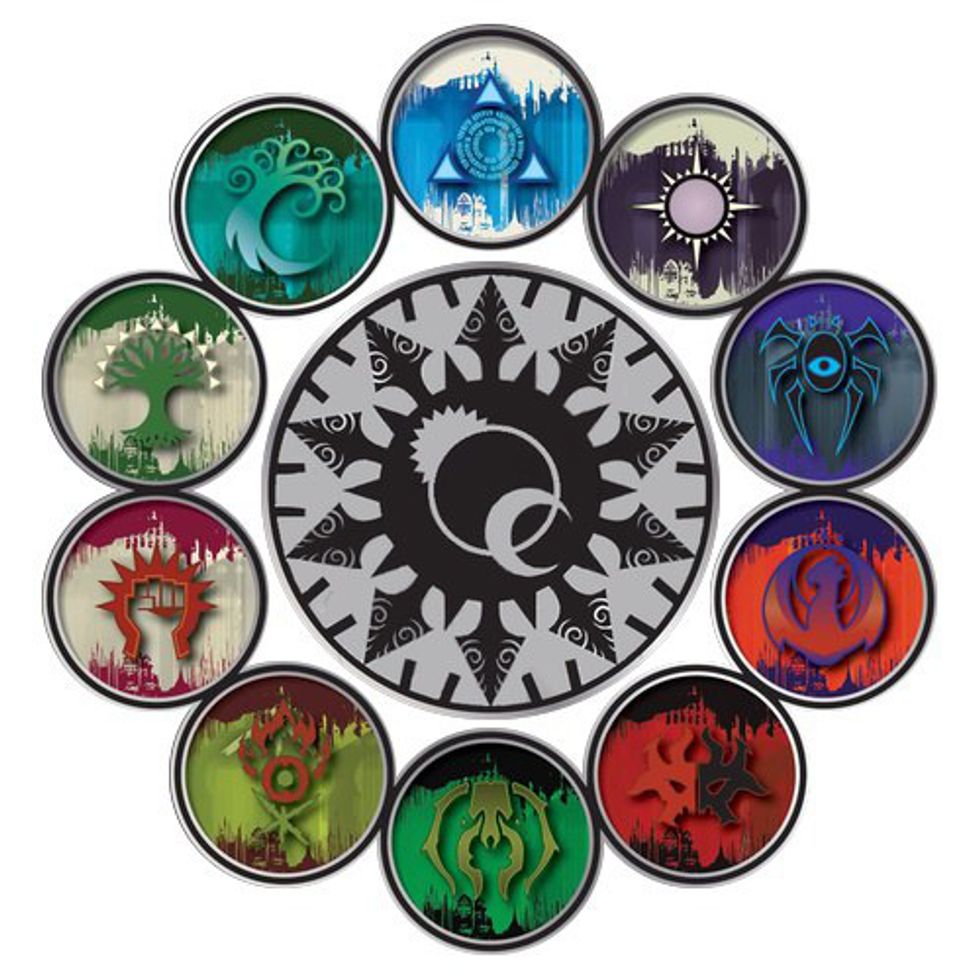A Friday night. I walk into my local game store confident, scanning the horizon for my potential opponents. I spot my friends, a couple of fellow Planeswalkers, at a nearby table. I sit down, open my backpack, and roll out my playmat: a full-art Champion mat that I had so valiantly earned from winning the Game Day tournament. The excitement of competition courses through my bloodstream as my thoughts turn to what strategies I might face off against. But no matter what, I would stay true to my deck, and even if it doesn't win, I'll have played the way that I was born to play. Oh yeah, it's game time.
This an obvious example of hyperbole on my part, but the popular trading card game, Magic: the Gathering does bring about a sense of wonder and excitement in my mind and the minds of many other global players. Since I was opening my first booster pack at age 14, Magic has been a very influential part of my life, and a very large detractor of my wallet size. Even as I become more of a competitive player, I still take great joy in the simplest aspects of Magic: the fantasy-driven artwork, the immersive storyline of the vast planes of the Multiverse, the smell of a freshly-cracked booster pack, and the friends that I've made along my journey. Despite being a humble trading card game, Magic has taught me lessons that are useful in everyday life, as well as immersed me in a gaming culture that, well, makes me feel at home. So, here's a couple of things that this wonderful game has taught me.
1. Cardboard is worth more than you'd think
When I first started playing Magic, I began to learn that some cards were better than others. That was understandable. What I didn't understand was why the prices of these cards were gonna put me in debt more than college ever could. The picture above is that of Black Lotus, one of the oldest cards printed in Magic. It also happens to be the most expensive. Try this: an Alpha Edition Black Lotus would cost you nearly $20,000. Translated to me as: the price of my first car times 10. Sure, cards nowadays are worth nowhere near that number, but some of thebiggest staples in various formats of the game can cost from a humble $5 to a whopping $100 (I'm looking at you, Tarmogoyf). There's a reason we call this game "Cardboard Crack."
2. Even when you're fast, you're still slow
Magic is a game defined by the presence of 5 colors of mana:=, the mystical energy that powers spells and lets you play cards. These colors are White, Blue, Black, Red, and Green. The significance of each color is found in its worldview, and that worldview affects how you might play the game using spells of that color. For example, let's look at Blue and Red: two of my favorite colors in the game, and also two of the most opposing colors in the game. While Blue tends to favor knowledge, foresight, and plans ahead, Red will charge all in with an army of Goblins and a fireball to the face for laughs. But even some of the most dedicated Red decks require an amount of skill and wisdom to be played: you need to know what move to make at the right time in order to beat your opponent, even if you want to finish the game as fast as possible. Being able to plan ahead, study my movements, and analyze, even when I'm trying to win fast, has been key in helping me succeed in the game.
3. Learn how to lose
When I first started playing in the tournament scene at my local game store, I was way in over my head. It's laughable to me now when I remember that I competed against some of the most effective decks in the game with my store-bought, pre-constructed intro deck. This first tournament was where I learned one of the most important lessons in Magic: learning how to lose. This doesn't just mean that you need to lose with grace (and be respectful to your opponent), but it also means that you need to learn why you lost, if there's any way you could've won, and try to think of the mistakes you made. Sometimes the deck that played was just not well-built enough to stand against more powerful decks, but even if this is the case, studying how you can make yourself a better player and learning how to navigate the game better is a core component of being good at Magic, and losing a game teaches these skills and allows you to propel yourself ahead for the next game.
4. Being yourself is just as important as being competitive
The picture above highlights the 10 Guilds of Ravnica: ten factions centered around a specific two-color combination of mana that determines how the guilds function, what type of magic they use, and the deeper lore behind the two colors. More importantly, they can often represent a player's personality. A Green-White player, represented by the Selesnya Conclave, plays a very creature-based game that cares about the team, while a Black-Red, belonging to the Rakdos Cult, plays a fast-paced game that looks to kill fast. While some strategies can hold stronger than others, I find that I'm not usually in my element when I'm not my playing my tradition Blue-Red colors. Not only can I have the pride of standing behind my guild and its beliefs, but I can also say that I'm playing what I want to play, even if it doesn't win me the game. Also, I'm not a total sellout.
5. Always leave two Islands untapped.
This is important. Just do it.




